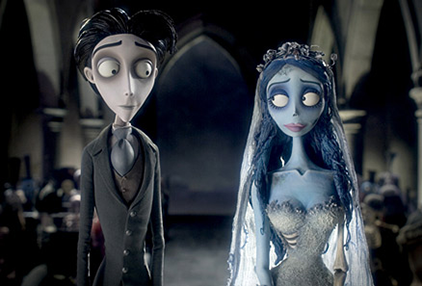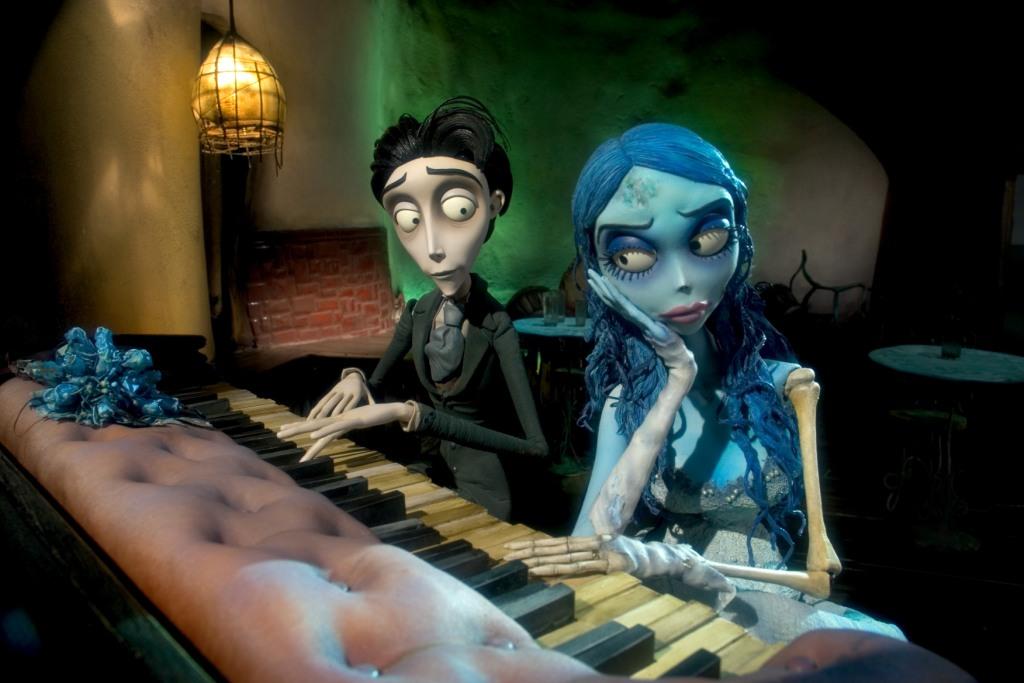“She may turn out to be the greatest thing since Antonin Scalia, but when will we know that?” Two days after the Harriet Miers pick, and despite news reports accentuating her strong evangelicism, conservatives are still openly perturbed by the choice (George Will is particularly livid.) As for how she stands on the issues, we still know very little, other than her mixed record on gay rights and probable pro-life stance. (Well, presumably, she’s also pro-lottery.) Nevertheless, it sounds like she’s probably already got Harry Reid’s vote.
Month: October 2005
Covenant of the Ring.
LotR masterminds Peter Jackson and Fran Walsh announce they’ll be executive producing the film version of Halo, with WETA in charge of the FX. “‘As a gaming fan, I’m excited to bring Halo’s premise, action and settings to the screen with all the specificity and reality today’s technology can provide,’ said Jackson.” Halo? I dunno…even as just a production credit, I think it’s a bizarre choice for Wingnut Films, particularly as a follow-up to the Rings trilogy and Kong.
Eddy Hearts New York.
On the the first day of training camp, the Knicks partially rectified their guard-heavy line-up by stealing center Eddy Curry from Chicago (due to the furor over his arrhythmia), along with veteran PF Antonio Davis. And better yet, we got rid of Tim Thomas, who’s underachieved from Day 1. (The Knicks also purportedly give up Michael Sweetney, Jermaine Jackson, and a contingent first-rounder…the only loss there is Sweetney.) I must say, this is a nice catch to start the season, if Curry’s condition is as benign as hoped. Update: ESPN’s John Hollinger disagrees.
House of Shame.
“Thus began [in 1994] what historians will regard as the single most corrupt decade in the long and colorful history of the House of Representatives…[N]ever before has the leadership of the House been hijacked by a small band of extremists bent on building a ruthless shakedown machine, lining the pockets of their richest constituents and rolling back popular protections for ordinary people” By way of Cliopatria, Newsweek‘s Jonathan Alter surveys the corruption of Boss DeLay’s ring, with an eye to history. Update: And, wouldn’t you know it, Boss DeLay has been indicted again, this time for money laundering.
A Long-Expected Party.
“Have you ever been called home by the clear ringing of silver trumpets?” Alas, for the first time in three years, we don’t have a new extended LotR DVD in the works this Christmas. But to ease the pain of its passing, the full, three-disc, 180-minute Fellowship of the Ring score will be released November 22, which will include a DVD-version in 5.1 surround sound. Presumably, the other two films will follow in due course. In the meantime, this site has assembled mp3s of some of the missing musical moments from the trilogy. (Unfortunately, they haven’t yet included the culmination of the Rohan theme, as heard during the Ride of the Rohirrim.) I will go there, I will go there…and back again.
Obama: Watch the Friendly Fire.
“There is one way, over the long haul, to guarantee the appointment of judges that are sensitive to issues of social justice, and that is to win the right to appoint them by recapturing the presidency and the Senate. And I don’t believe we get there by vilifying good allies, with a lifetime record of battling for progressive causes, over one vote or position. I am convinced that, our mutual frustrations and strongly-held beliefs notwithstanding, the strategy driving much of Democratic advocacy, and the tone of much of our rhetoric, is an impediment to creating a workable progressive majority in this country.” In an impressive blog post that’s worth reading in its entirety, Sen. Barack Obama spells out his concerns with the often-shrill, backbiting tone of the liberal blogosphere (particularly at sites like dKos) and progressive advocacy groups in general. Put plainly, his point is this: keep an eye to undecided voters, and concentrate your firepower outward. (Via Medley.)
Round 2: Miers.
In the early morning, Dubya chooses White House Counsel Harriet Miers as the next Supreme Court nominee. (Searching far and wide again, I see.) Well, let the vetting begin. On the plus side, the fundies seem perturbed, and she has some Dem donations in her past. On the other hand, she’s a rabid Bush loyalist, calling him “the most brilliant man she had ever met.” (Get out much?) Update: The Weekly Standard‘s Bill Kristol is disappointed, depressed, and demoralized by the Miers pick, while Legal Times was already unenthused about her. Update 2: Slate‘s Dahlia Lithwick and Emily Bazelon are similarly nonplussed: “Can anyone really imagine that she’d be the nominee if she weren’t a woman and the president’s friend and loyal adviser? Cronyism and affirmative action: It’s a nasty mix.“
Unsound Methods.

Given the very favorable (and somewhat spoilerish) reviews that David Cronenberg’s A History of Violence has been getting, I went in expecting a great film from this auteur of the disturbing (albeit one without the throbbing, fleshy, pulsating chunks of gristle usually associated with Cronenberg’s oeuvre.) But, while Violence is a good film with some excellent performances — most notably by Viggo Mortensen and Maria Bello — it is not ultimately a great one. In fact, I found it something of a letdown after all the hype. [Be warned: I don’t want to give everything away, but it’s a hard movie to talk about without delving into some very heavy spoilers, including the film’s conclusion.]
I’ve never read the source graphic novel, so I can’t vouch for the deviations in the tale, but it basically goes as follows: Viggo Mortensen is Tom Stall, a hard-working, Midwestern fella who runs the local diner in Smalltown USA. He is loved by his adoring, alluring wife (Bello, exquisite as usual), admired by his two children, respected by the community, and generally living the American dream, as long exemplified in Norman Rockwell paintings and The Saturday Evening Post. (A lot of this corn-fed small-town-America set-up — a little girl’s nightmare, a run-in with a high-school bully — comes off as completely flat and stilted, but I think there’s method in Cronenberg’s madness. What he’s doing is akin to the Naomi Watts/Nancy Drew stuff in the first half of David Lynch’s Mulholland Drive — he’s lulling us in with mundanity to knock us off-kilter later on.)
Anyway, Tom’s picture-perfect life goes awry after he becomes an unwitting “American Hero” media sensation by killing two Bad Men in his diner one evening. (We know they’re Bad Men because one of them blows away a little girl in the first five minutes, which seems like exceedingly cheap and lazy character development.) Soon, scraggly-looking n’er-do-wells like Ed Harris come-a-knockin’, convinced that Tom Stall is not Tom Stall at all, but rather…Aragorn of the Dunedain, Isildur’s Heir and a trained, lethal adversary. Ok, not quite…nevertheless, this case of mistaken identity eventually forces Stall to forego being a man of peace and come to grips with his violent tendencies. And, in true Cronenberg fashion, this violence soon seems to infect Stall’s world like a particularly dangerous viral meme, and threatens to transform forever the lives of he and his family.
Along the way, A History of Violence comments on many significant tropes in the history of violence — “justified” violence, parental violence, marital and sexual violence — culminating in a replay of the original Biblical murder (one which loses much of its force due to William Hurt being an insufferable hambone — Perhaps he and Harris should’ve switched roles.) And, to its credit, it leaves many of these setpieces tantalizingly ambiguous. Was Viggo’s kid right to smash up the bully? How should we feel about the incident on the stairwell? But, for all that, I’m with Edelstein — The larger arc of the story seems cartoonishly black-and-white. Yes, the last scene of the film is an undeniably powerful one, but, really, the Stalls get off easy. If violence, once unleashed, spreads like a wildfire, then how come only Bad People (or at the vey least Deserving People, like the bully) end up on its brunt end? True, Cronenberg shows us the gory consequences of murder (Throbbing Gristle sighting!), but never upon any character that we happen to like.
I can see the argument that the story had to end the way it did — with the Stalls perhaps physically unharmed but in spiritual turmoil — as a commentary on either the standard narrative of the Western (covered similarly in Unforgiven) or on Dubya’s foreign policy, which Cronenberg says is an analogy he and Viggo had in mind. Still, as it is, I think the story’s conclusion subverts the movie’s message. By leaving the white hats shaken, not stirred and the black hats pushing up daisies, A History of Violence ends up suggesting that violence is actually a rather effective way of dealing with Bad People, although it may cost you (sniff) a few tears. All in all, A History of Violence is a much-better-than-average movie and it’s one well worth seeing, but, in the end, I don’t think it quite holds up.

Leakin’ Libby & Ramblin’ Rove.
“As the CIA leak investigation heads toward its expected conclusion this month, it has become increasingly clear that two of the most powerful men in the Bush administration were more involved in the unmasking of operative Valerie Plame than the White House originally indicated.” Bringing the somewhat bizarre recent revelation of Judith Miller’s source to bear on the story, the Washington Post surveys the roles of Karl Rove and Scooter Libby in Plamegate. “[Lawyers with inside info] surmise that [Special Prosecutor Patrick] Fitzgerald is considering whether he can bring charges of a criminal conspiracy perpetrated by a group of senior Bush administration officials..”
Black Celebration.

As with the wonders of Pixar — indeed, even more so, given the amount of time and effort involved — Tim Burton’s Corpse Bride is such a (literally) eye-popping stop-motion marvel that it seems churlish to quibble with its perhaps just-a-bit-too-formulaic approach. If you loved The Nightmare Before Christmas (as I did), you’ve likely already seen Corpse Bride, and probably loved it also…even if you felt that you’d already seen much of it before (and especially if you ever played Grim Fandango.) Nevertheless, even ensconced as it is in the now-slightly-creaky Burtonverse, Corpse Bride is a sumptuous 75-minute treat that’s skull-and-shoulders above most animated fare.
The story is thus: Much to the chagrin of the aristocratic (but penniless) Everglots (Albert Finney & Joanna Lumley), their daughter Victoria (Emily Watson) is soon to be betrothed to the meek, moon-eyed Victor (Johnny Depp), sire of nouveau-riche and fabulously wealthy fishmongers. Victor and Victoria seem to get on well enough — they both enjoy melancholy etudes on the Harryhausen piano, which should tell you all you need to know about their romantic viability in Tim Burton’s world. But, when Victor is prevailed upon by the local minister (Christopher Lee) to practice his vows in the nearby enchanted forest, he inadvertently awakens — and weds — the Corpse Bride (Helena Bonham Carter), who, despite being undead, is quite a looker…all pillow lips and bedroom eyes (albeit one that’s home to a Peter Lorre-like maggot.) Y’see, apparently long ago a dastardly suitor (Richard Grant) pulled a Kill Bill on the Bride here, and since then she’s been waiting for a bridegroom to free her from his curse, and die with her happily ever after…
If you don’t see where this is going from the opening reel, well, you should get out to the movies more. But that’s neither here nor there — as with life (and, in this film, death), the journey is the reward. At times, Corpse Bride seems entirely too reminiscent of Nightmare — Instead of “ma-king Christ-mas,” the denizens of the Dead are ma-king wed-dings. (Or, when the Dead Elder-fellow (Michael Gough) scratches the hole in his skull, it’s funny…but it also recalls the exact same move by Dr. Finkelstein in the earlier film.) For the most part, though, Corpse Bride is rife with its own inventive flourishes. (I particularly liked the little undead kids at right, the Elder’s raven, and the designs of the aged living.) And I’m willing to forgive sins much more grievous than the mild repetition on display here if it means Burton & co. will keep making stop-motion movies. Their gothic world may always be tinged with the same palette of nightmare and melancholy, but frankly, I’m smitten.

